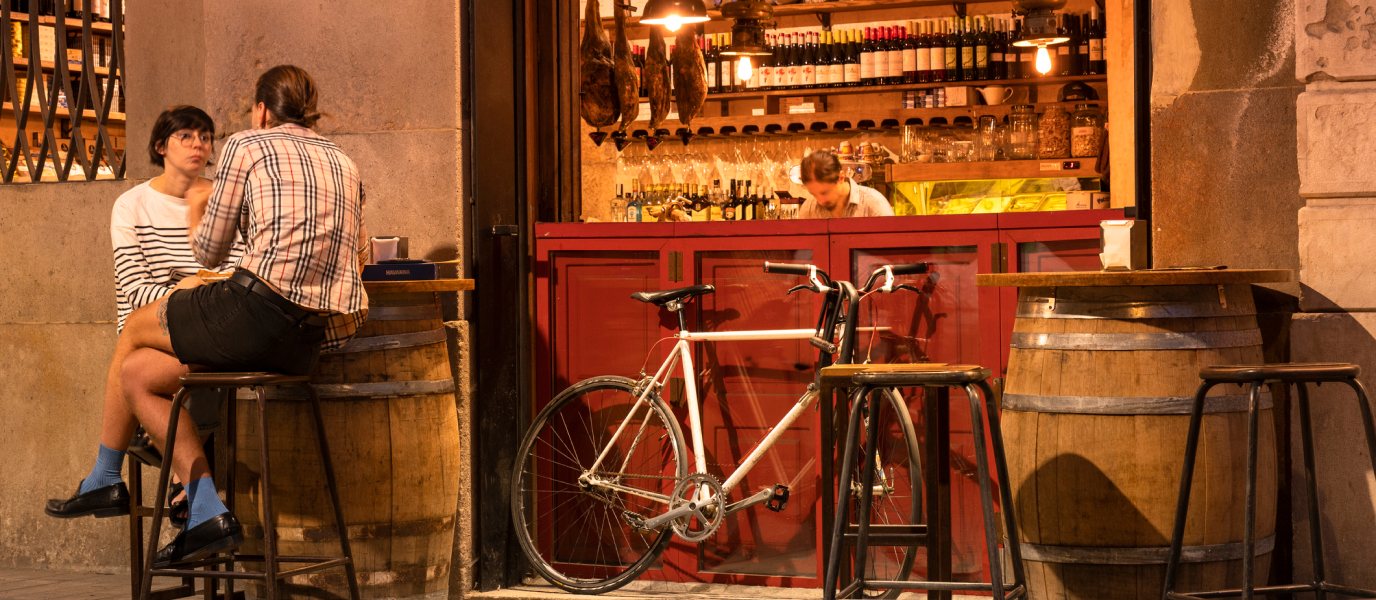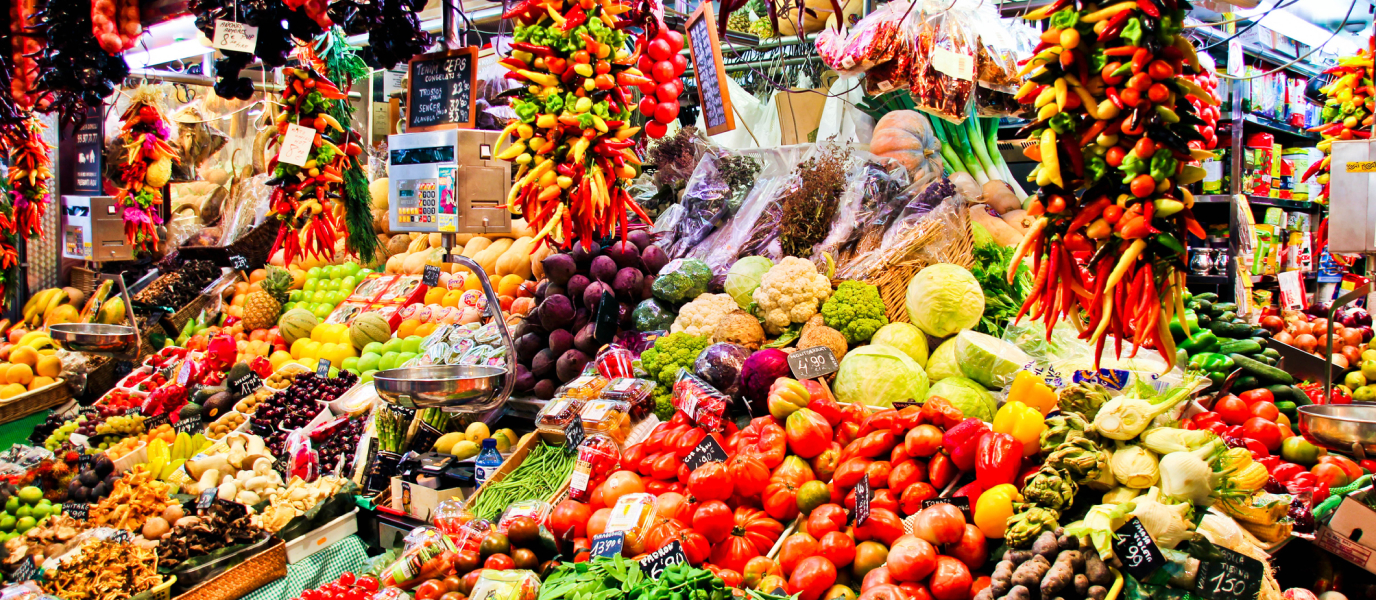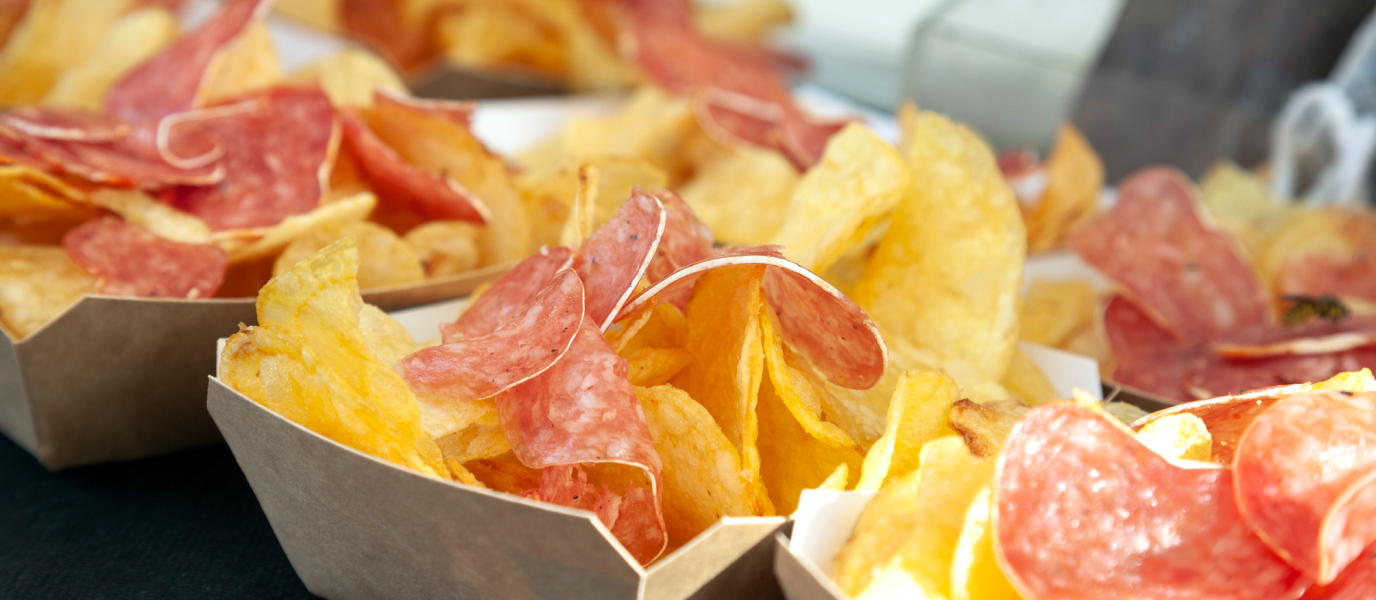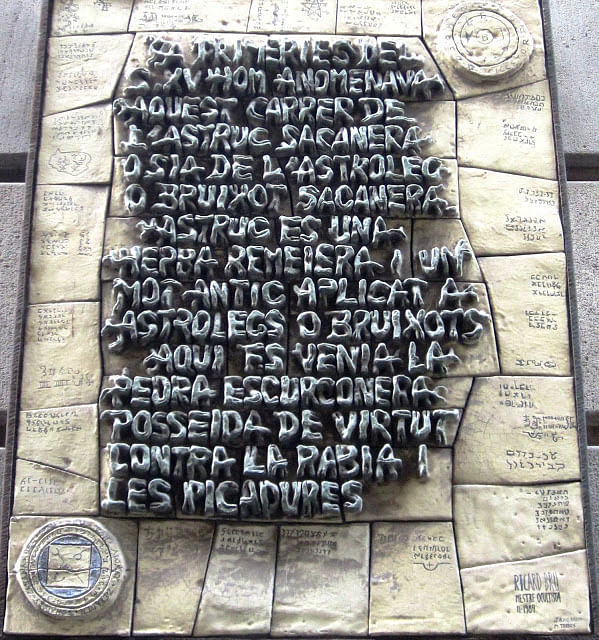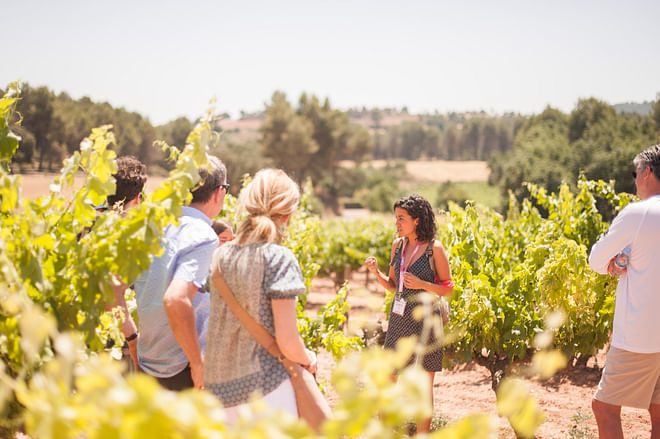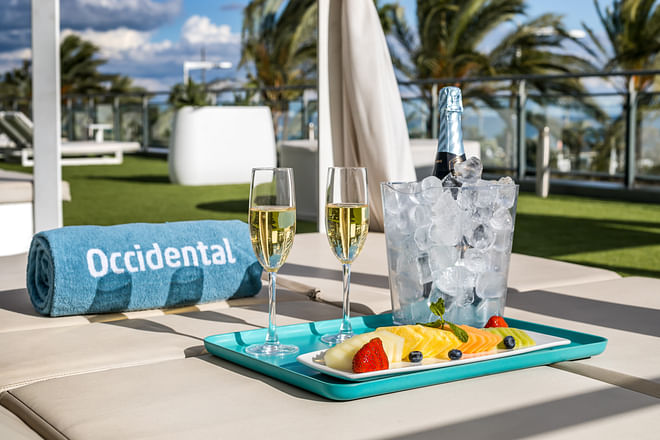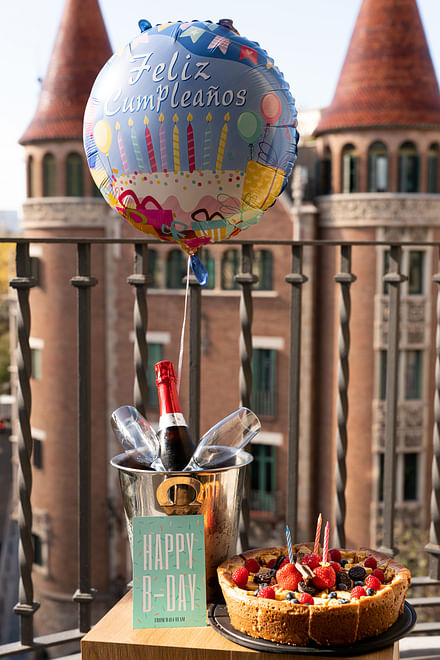Discovering Barcelona’s typical food is a guaranteed way to be able to enjoy delicious, varied flavours. The roots of this cuisine largely lie in the Mediterranean. That’s why fish and seafood dishes are so popular. Amongst them are the various rice dishes, the delicious suquet de peix (fish and shellfish soup-stew) and the esqueixada de bacallà (shredded salt cod, tomato and onion salad).
But there’s also room for dishes based on the fruits of the earth, like escudella i carn d’olla (broth with pasta or rice and big meatballs). Add to that the botifarras amb mongetes (sausages with white beans), the coca pastries, the canelones and, of course, calçots (spring onions) and their delicious romesco sauce.
To start, pa amb tomàquet
A typical meal in Barcelona always starts with a generous slice of toasted bread, rubbed with garlic and tomato, and then drizzled with extra virgin olive oil. This is the famous pa amb tomàquet, or bread and tomato, a true representation of Catalan cuisine, as simple as it is juicy. It’s an omnipresent entrée, but it is also a side for the rest of the dishes served during lunch.
This classic bread and tomato is generally accompanied by a bowl of aioli, a dressing made of garlic, olive oil and salt. Some chefs add an egg yolk to it. Either way, it’s the perfect sauce to go both with the bread and certain dishes that have intense flavours, such as seafood-based rice dishes.
The land of escalivada
Another queen of Barcelona’s typical food, above all in spring and summer when people fancy chilled food, is escalivada. It’s essentially a salad made of various roasted vegetables. It’s usually red pepper, aubergine, onion and tomato. These vegetables are roasted, cut into strips, have their skin and seeds removed, and are served dressed with extra virgin olive oil and a few pinches of salt.
Escalivada can be served both as a salad and as a side for the main fish or meat-based dish. But the best way to enjoy it is piled on a slice of toasted pagès bread (the bread typical of the Catalan countryside), letting the oil soak in nicely. Without a doubt, this is a very popular tapa.
Calçots and their sauce
Calçots are one of the most popular of Barcelona’s typical dishes during the winter months. It’s worth mentioning that this is a dish more associated with the countryside than it is with the city. That’s mostly because these long, tender spring onions, need to be cooked on a wood fire (wrapped in newspaper) to achieve the right consistency and, above all, the delicious flavour, that’s a mix of sweet and smoky.
But a good calçot would be nothing without the sauce it’s dipped in: romesco. And it’s not easy to make. You need lots of ingredients, and on top of that each ingredient has to be properly prepared. They are:
- Roast tomatoes and garlic, ideally done in a wood-fired oven.
- Bread, which can be fried or not, and will be mashed with the garlic.
- Dried red peppers or ñoras.
- Toasted almonds and hazelnuts, well chopped.
- Olive oil.
- Salt and pepper.
All of this is well blended until the sauce has a thick consistency. The calçots are fully-submerged in it and, when you eat them, you have to raise your arm up high, and open your mouth wide. The ritual is just as amusing as the food is delicious.
Suquet de peix
Just as in other Mediterranean regions, in Catalonia and especially in Barcelona, stews prepared using the fruits of the sea are fundamental. Suquet de peix, or fish soup-stew, is everywhere. This is a dish that comes from the meals that fishermen would have cooked up on their boats, using whitebait—the fish that couldn’t be sold at market due to its small size or because it’s too bony. Potatoes and other vegetables are also added to the stock. The combination is a delicious stew.
This fish stock or fumet is also used to make seafood rice dishes. These are extremely popular in the restaurants that populate Barcelona’s coast, especially in the neighbourhood of La Barceloneta (vincular a URL correspondiente). In fact, you’ll struggle to find an establishment that doesn’t serve paella, even though it’s important to note that paella is more typical of Valencia.
More of Barcelona’s typical dishes
These are just a few notes on the delicious typical food of Barcelona and Catalonia. It’s true that the huge variety of dishes you can enjoy here can never be fully appreciated if you’re on a trip of just a few short days. However, these are some of the most popular creations you’ll be able to sample:
- Coca Catalana: This is essentially a base of wheat flour, water, salt and yeast (just like bread), which you can top with all kinds of savoury ingredients, and pop in the oven. Sweet versions use a dough made of egg, flour and sugar. People tend to compare cocas with pizzas, although there are a lot of differences when it comes to texture and flavour. One of the most popular is the Coca de Sant Joan (sweet), which is normally consumed on Saint John’s Eve.
- Escudella i carn d’olla: This is the Catalan version of the various different types of stew that are made in Spain. That makes it the perfect dish for winter, made of chicken, beef, chickpeas, cabbage, carrot, potatoes and celery. That’s all cooked over a slow heat for hours to coax all the goodness out. Right at the end cooks add a ball of mince, garlic, parsley, egg and bread crumbs. The broth is served first (delicious with galets or pasta shapes at Christmas) followed by the rest of the ingredients, separately: first the vegetables and then the meat.
- Canelones: These are very similar to the ones made in Italy. They’re fiddly to make and normally served on public holidays. They’re particularly typical of the 26th of December (a bank holiday in Catalonia) when the leftovers from the previous two days are used for the filling.
- Botifarra amb mongetes: This is a simple dish of boiled white beans (mongetes) that are then sautéed and served with the botifarra Ideally, this should all be prepared over the embers of a wood fire.
- Esqueixada de bacallà: This is a salad of cod that’s desalinated, crumbled and dressed with extra virgin olive oil and vinegar, along with black olives, pepper and tomato. You can also add other vegetables, like roasted red peppers and even carrot.
- Fricandó: This is a beef casserole, preferably made from beef fillet, served accompanied by the sauce it cooks in, which mushrooms are added to. It’s especially tasty if the mushrooms are wild.
- Crema Catalana: As the name might suggest, this is the classic dessert served all over Catalonia. It’s a version of crème brûlée, the surface of which is caramelised under a broiler at a high temperature.
- Mel i mató: This is what it says on the tin, honey and cheese. The cheese should be fresh, and preferably made of goat or sheep’s milk. It’s a very simple dish that you’ll often find in Catalan homes.




































































